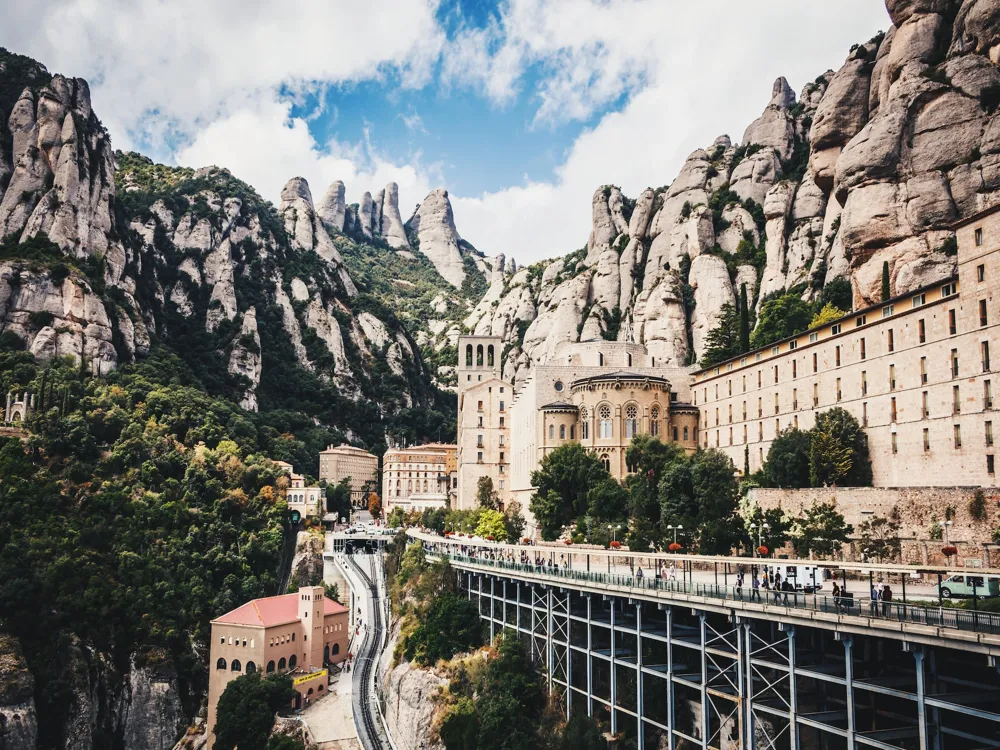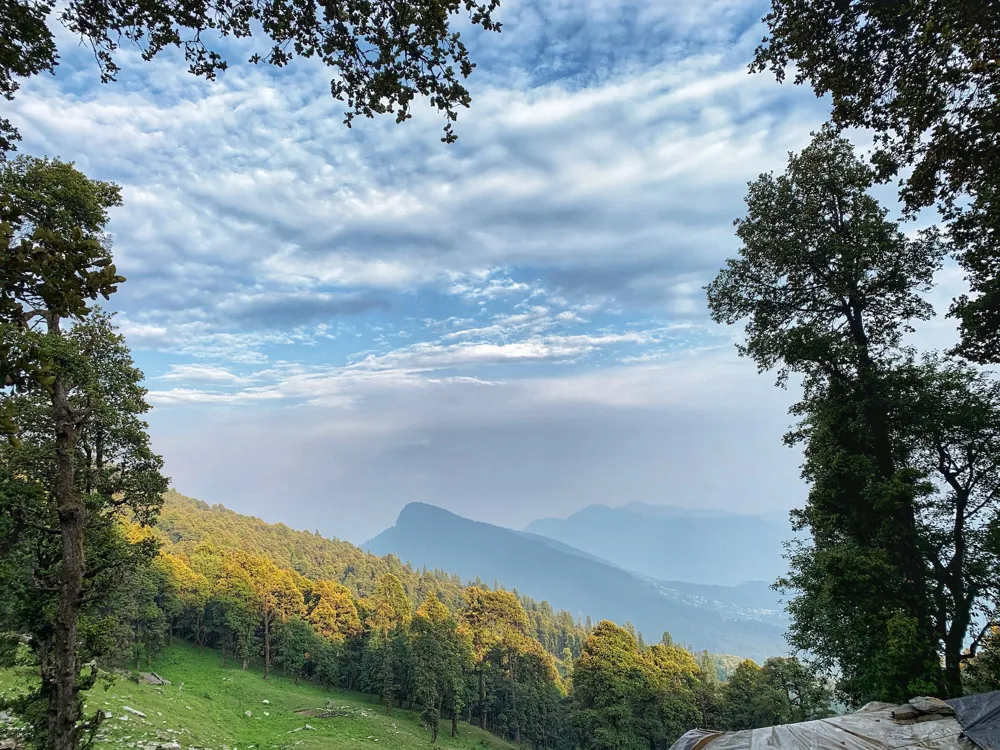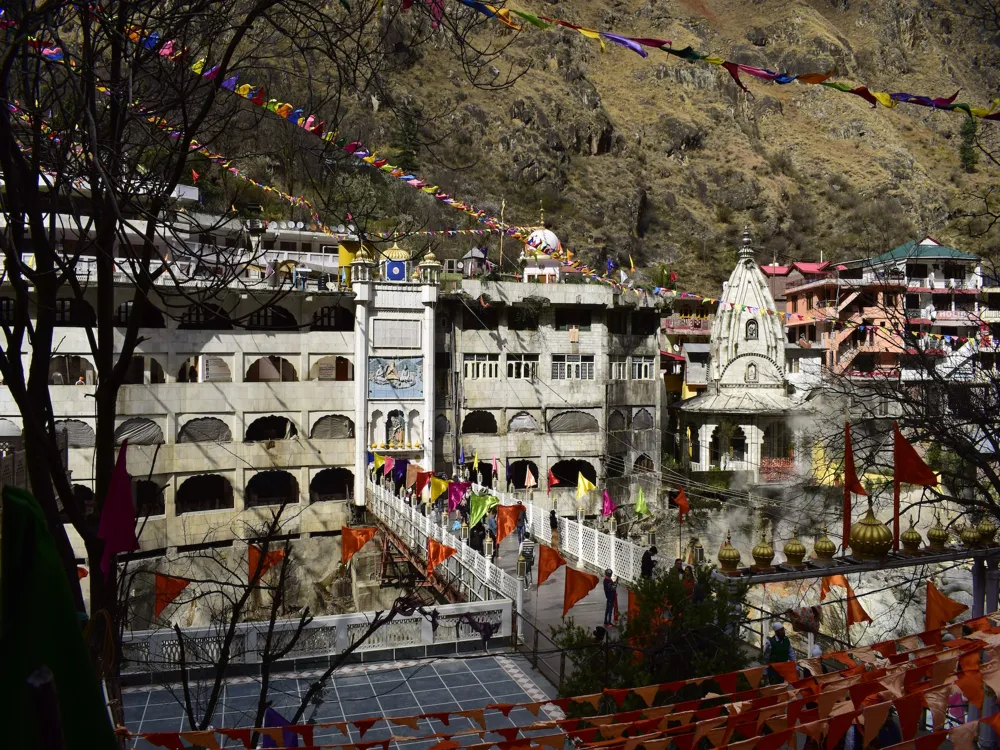Nestled in the serene valley of Naggar, Himachal Pradesh, the Krishna Temple stands as a splendid example of the region's rich cultural heritage and architectural brilliance. This ancient temple, dedicated to Lord Krishna, is not just a spiritual haven but also a testament to the artistic prowess of the bygone eras. The temple is believed to date back several centuries and holds a significant place in the hearts of the locals and pilgrims alike.
The Krishna Temple is set against the backdrop of the breathtaking Himalayan ranges, offering a tranquil and spiritual ambiance to all who visit. The temple's history is steeped in myths and legends, intertwined with the historical fabric of Naggar, which was once the capital of the Kullu kingdom. This sacred site attracts a myriad of devotees and tourists, drawn not only by its religious significance but also by its historical and architectural charm.
The architecture of the Krishna Temple is a remarkable blend of traditional Himalayan and Buddhist styles, reflective of the diverse cultural influences that have shaped the region. The temple's wooden structure, intricate carvings, and unique pagoda-style roof are distinctive features that set it apart from other temples in Himachal Pradesh. The use of locally sourced wood and stone in its construction showcases the ingenuity and resourcefulness of the artisans of the past.
As you step inside the temple, you are greeted by an aura of peace and spirituality. The sanctum sanctorum houses the idol of Lord Krishna, adorned with colorful clothes and jewelry, exuding a sense of divine presence. The walls and ceilings of the temple are adorned with exquisite carvings and paintings, depicting scenes from Hindu mythology and the life of Lord Krishna. These artistic elements not only add to the aesthetic appeal of the temple but also serve as a medium of storytelling, bringing ancient tales to life.
The Krishna Temple is not just a place of worship but also a cultural hub, playing a pivotal role in the local community. The temple premises often host various religious and cultural events, including festivals, rituals, and traditional performances. These events provide a glimpse into the vibrant cultural traditions of Himachal Pradesh and offer an immersive experience for visitors.
A visit to the Krishna Temple is a journey through time, offering a window into the rich cultural and spiritual heritage of Naggar. The temple's serene environment, coupled with its architectural magnificence, makes it a must-visit destination for anyone exploring the wonders of Himachal Pradesh.
The Krishna Temple of Naggar, Himachal Pradesh, is an architectural marvel that beautifully encapsulates the essence of Himalayan temple architecture. This historic temple, believed to be several centuries old, showcases a unique blend of indigenous Kath-Kuni architecture and Buddhist architectural influences. The temple's design and construction techniques are a testament to the skilled craftsmanship and artistic vision of the artisans of the past.
One of the most striking features of the Krishna Temple is its wooden structure. The use of locally sourced wood, primarily cedar and deodar, is a hallmark of Himalayan architecture. This not only provided durability and resistance to the harsh mountain climate but also lent a warm, earthy charm to the temple. The wooden beams, pillars, and intricate lattice work are examples of the fine craftsmanship prevalent in the region.
The Krishna Temple's layout follows a typical Pahari style, characterized by a square sanctum sanctorum (Garbhagriha) surrounded by a circumambulatory path (Pradakshina Patha). The sanctum houses the revered idol of Lord Krishna, which is the focal point of the temple. The roof of the temple is another distinctive feature, designed in a pagoda style, which is a common element in Buddhist architecture. This multi-tiered roof, adorned with elaborate wooden carvings and metalwork, not only enhances the temple's aesthetic appeal but also serves a practical purpose in shedding snow and rainwater efficiently.
The temple walls are adorned with exquisite carvings and paintings, depicting scenes from Hindu mythology, particularly the life and exploits of Lord Krishna. These artistic elements are not just decorative but also serve as a medium for storytelling and spiritual instruction. The fusion of art and architecture in the temple creates a space that is both visually stunning and spiritually uplifting.
The Krishna Temple also features a unique structural technique known as 'Dhajji Dewari', which involves filling spaces between wooden frames with stones and rubble. This technique not only adds to the aesthetic appeal of the temple but also enhances its structural stability, making it resilient to earthquakes and other natural calamities common in the Himalayan region.
The temple
Overview of Krishna Temple in Naggar, Himachal Pradesh
Architecture of Krishna Temple
Krishna Temple
Naggar
Himachal Pradesh
₹ 5,000 onwards
View naggar Packages
Weather :
Label : Must Visit
Tags : Temple
Timings : 4:00 AM - 9:00 PM.
Nirmalya Visarjan Pooja is held at 5:30 AM.
Time Required : 2-3 hrs
Dress Code : (Full-length clothes)
Men: Dhoti or pant and shirt. No Lungi, Shorts and other modern outfits are not allowed.
Women: Saree, half-saree, salwar-kameez, set-mundu or skirt and blouse.
Planning a Trip? Ask Your Question
Also Refered As:
Udupi Shri Krishna Matha
Naggar Travel Packages
View All Packages For Naggar
Top Hotel Collections for Naggar

Private Pool

Luxury Hotels

5-Star Hotels

Pet Friendly
Top Hotels Near Naggar
Other Top Ranking Places In Naggar
View All Places To Visit In naggar
View naggar Packages
Weather :
Label : Must Visit
Tags : Temple
Timings : 4:00 AM - 9:00 PM.
Nirmalya Visarjan Pooja is held at 5:30 AM.
Time Required : 2-3 hrs
Dress Code : (Full-length clothes)
Men: Dhoti or pant and shirt. No Lungi, Shorts and other modern outfits are not allowed.
Women: Saree, half-saree, salwar-kameez, set-mundu or skirt and blouse.
Planning a Trip? Ask Your Question
Also Refered As:
Udupi Shri Krishna Matha
Naggar Travel Packages
View All Packages For Naggar
Top Hotel Collections for Naggar

Private Pool

Luxury Hotels

5-Star Hotels

Pet Friendly























